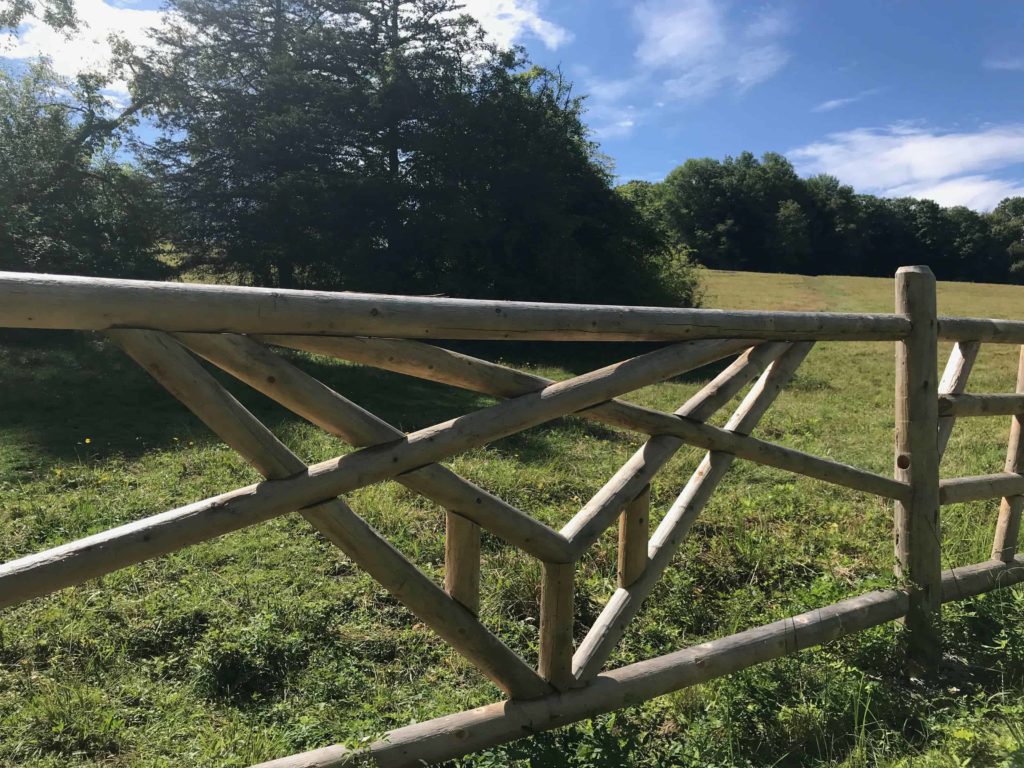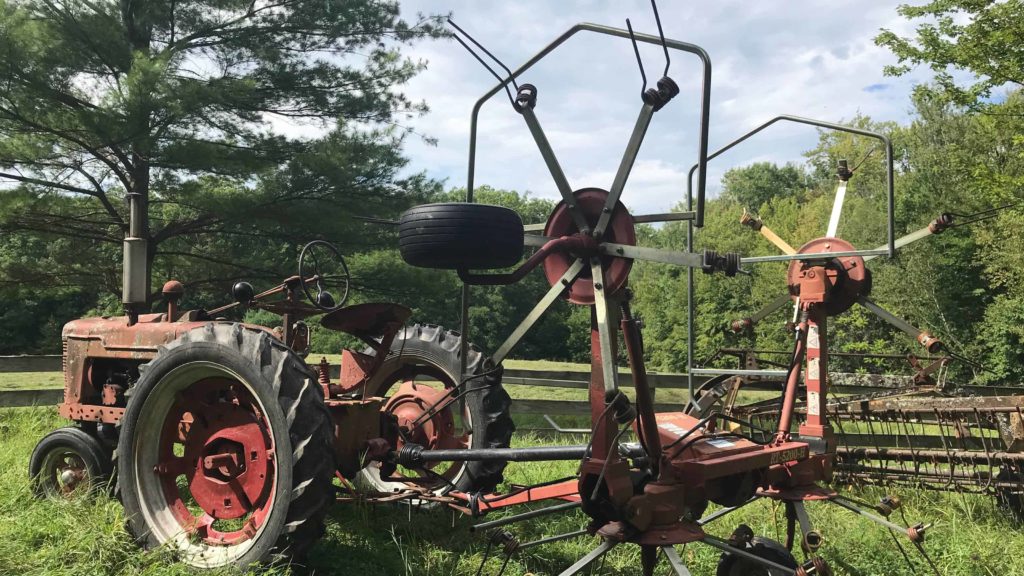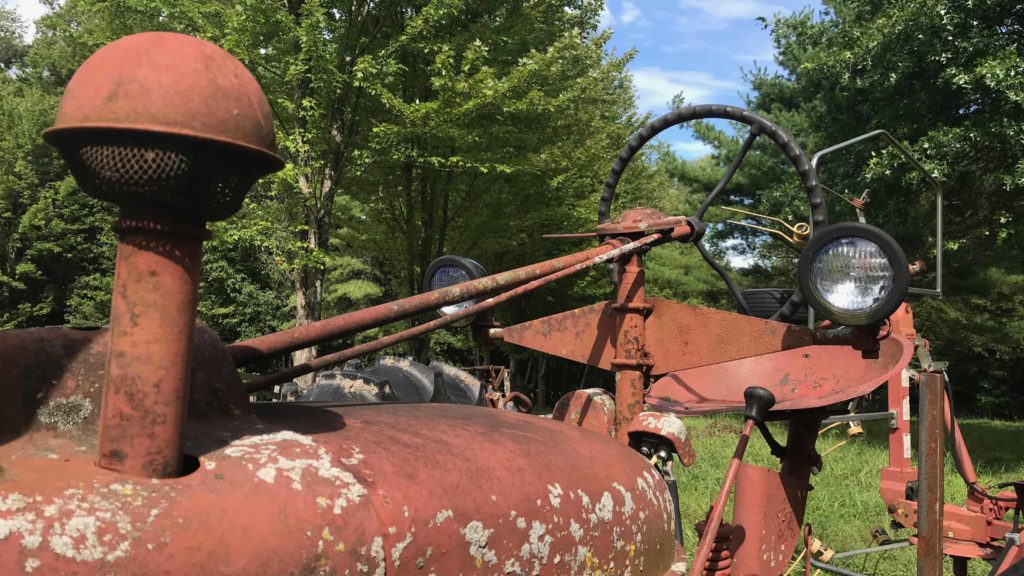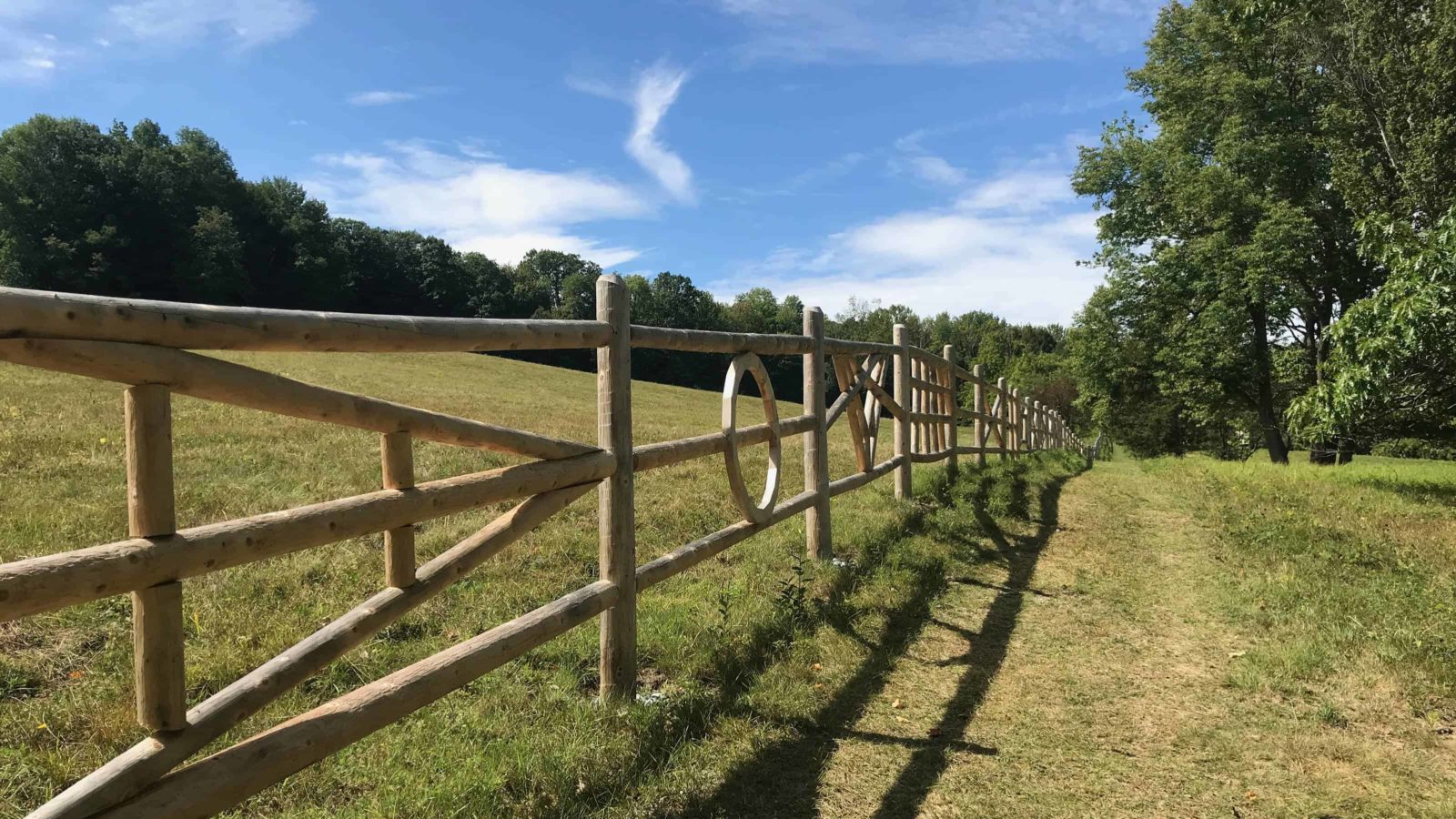Songbirds were flying through the sculpture. I watched one light down, a slender soft grey-brown. She paused on a rail, the buttery color of wood that has come into place recently and not had time to weather. She was standing on a new work 620 feet long — a rejiggered split-rail fence.
As I paused with her, a few feet away, I could look back across the lawn and the reflecting pools to the terrace, or out across Stone Hill. I was walking slowly along Analia Saban’s Teaching a Cow How to Draw, one of the six new works in the Clark Art Institute’s first outdoor sculpture show, Ground/Work.
They should all be in place now. The Clark has been installing them gradually, as they have come in from across the country and some across the ocean. And anyone can see them now, free, on a walk through the grounds and trails.
They are a varied group. Los Angeles artist Kelly Akashi works in wax and bronze, fire and glass. Iranian-American abstract artist Nairy Baghramian lives and works in Berlin, and Jennie C. Jones works in abstraction and sound in Hudson, N.Y. Eva LeWitt, born in Italy and living in New York, weaves fields of color. South Korean artist Haegue Yang weaves light and hue, sound and even scent.
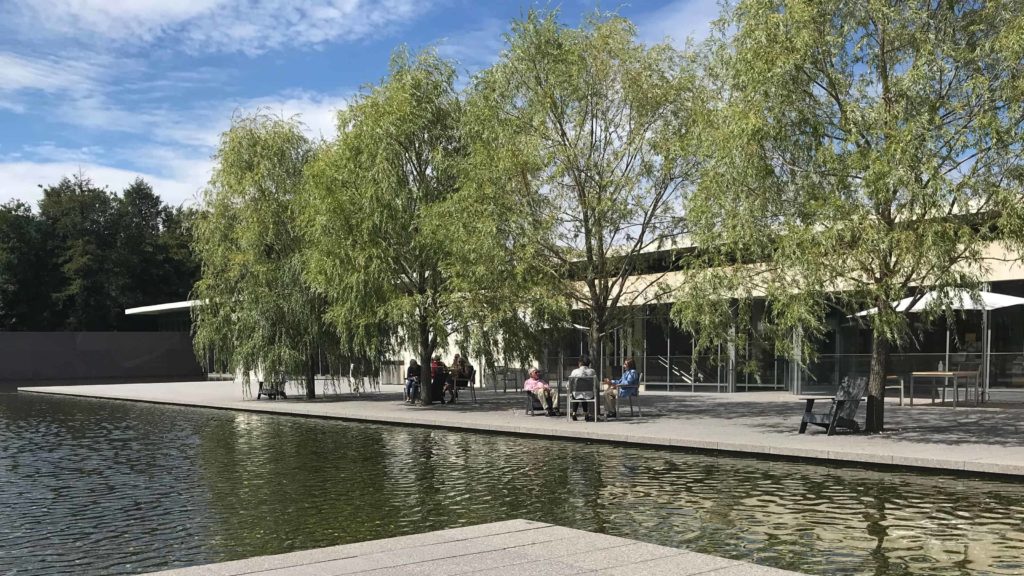
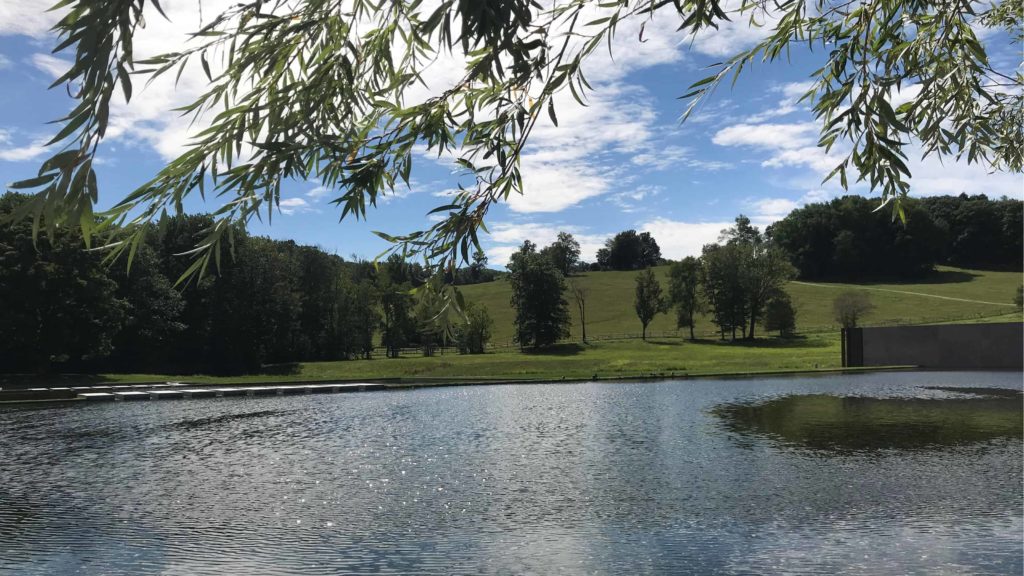
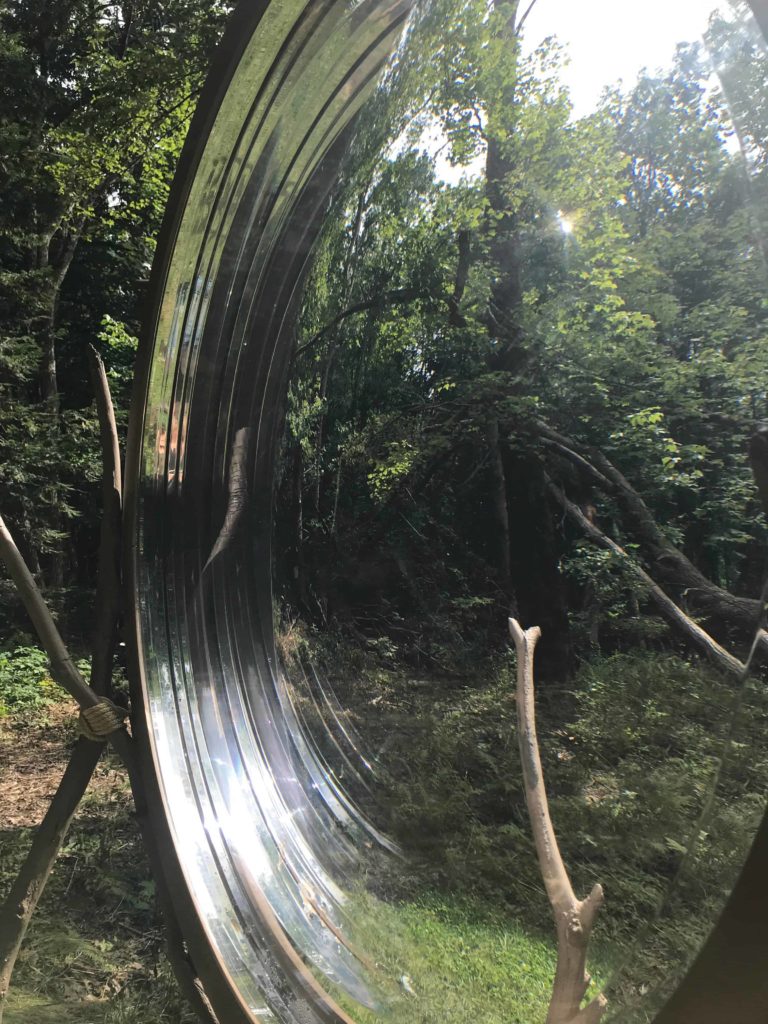

And Saban, based between L.A. and New York, infuses sculpture with ideas from the study of painting, and history, and tradition.
At the Clark, she has turned the fence at the foot of stone hill into a stream of shapes and symbols, and all of them refer to elements in learning how to draw a scene or take a photograph that will feel organic and compelling: The rule of thirds, showing where our eyes naturally fall in an image; the golden ratio, the spiral of a nautilus; two-point perspective, the sense of moving into an image at an angle, giving it depth.
I stopped to walk the fence line first for the name, the whimsy and humor of it. She says she wants to connect the cows on the hill with the work of the museum. I’ve sat up on the glacial boulders on Stone Hill before more than once with the valley below and a drift of curious dairy cows snuffling at my knees, and laughed with the beautiful absurd glory of it.
And then she caught my eye with the geometry she weaves into the familiar shape of the fence. She seems to be playing with light and shadow, and the form of the work feels naturally a part of the hill, and at the same time it drew my attention. I couldn’t remember ever standing here before, looking back across the fields to the museum. And I found myself walking slowly, drifting and stopping in the shade to watch my view of the hillside change.
As I watched the songbirds, too gently grey for sparrows, darting through the rayed angles of the rails, two girls came running down the hill well ahead of me. One looked slightly older, and they were calling to each other and launghing. I thought irresistably of my sister running up a steep grassy hillside at Avesbury years ago and turning handstands at the top.
